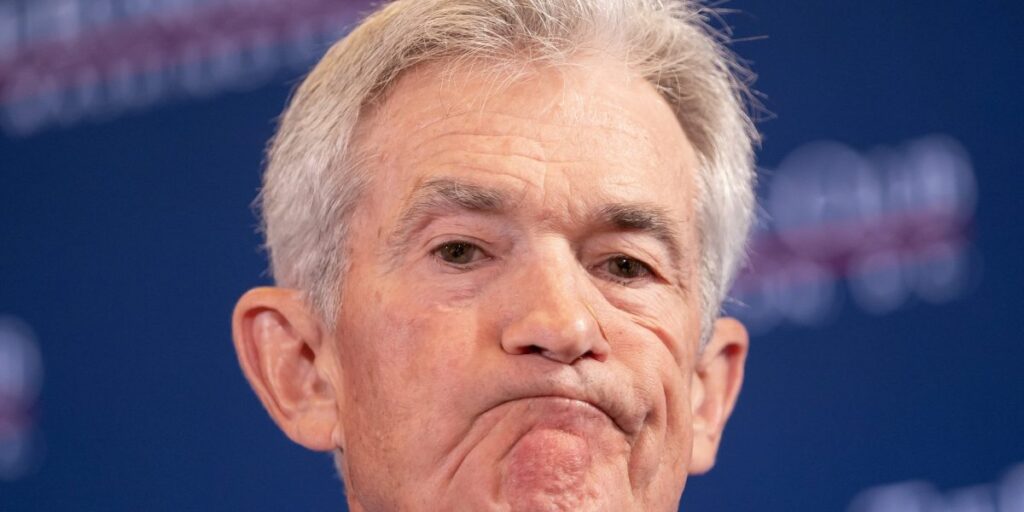A year after the Federal Reserve raised interest rates to their highest level in more than two decades, the central bank has succeeded in cooling an overheated U.S. economy, but rising borrowing costs have had some unexpected side effects.
High-income households are benefiting from soaring stock prices and rising home prices. Businesses are borrowing rapidly and consumers are continuing to spend.
But in other areas, the high interest rates of the past year are finally starting to take their toll: Americans are taking longer to find work, the unemployment rate is inching higher, small businesses are feeling the pain of rising lending costs, and low-income families are falling behind on auto loans and credit card payments.
“Things have been softening in recent months and Fed officials would be very concerned if they started to soften more rapidly,” said Citigroup economist Veronica Clark, adding that that would prompt officials to cut rates more quickly.
Policymakers are widely expected to keep rates steady when they meet next week, but investors expect the Fed to start cutting borrowing costs in September. Until then, assessing how Fed policy is or isn’t affecting the economy will help guide officials as they try to tame inflation without destroying the job market.
Housing market
Rising interest rates have had the most visible impact on the U.S. housing market. The Fed’s policies have not only caused borrowing costs to soar, they have also caused home prices to rise, with measures of home affordability approaching their lowest levels in more than 30 years.
With mortgage rates hovering around 7 percent, monthly mortgage payments for someone buying a median-priced home rose to $2,291 in May from $1,205 three years ago, according to the National Association of Realtors.
Economists expected sales to fall in response to rising borrowing costs, and that’s exactly what happened. “What we didn’t expect was how powerful the lock-in effect would be when the economy wasn’t in a recession,” said Ralph McLaughlin, senior economist at Realtor.com.
Existing homeowners who secured ultra-low mortgage rates during the pandemic remain reluctant to put their properties on the market, further restricting the limited supply of housing and pushing home prices to new highs.
Stock price rise
Rising interest rates typically weigh on stock prices by slowing corporate investment and growth, but investors have largely ignored those concerns, allowing stock prices — and Americans’ retirement accounts — to soar to new levels.
The S&P 500 has risen about 25% since the Fed began raising interest rates in March 2022, and household wealth has increased by about $3 trillion.
But if the Fed doesn’t start cutting rates soon, “the market will be vulnerable,” said Mark Zandi, chief economist at Moody’s Analytics. “Investor expectations of rate cuts are priced into current stock prices.”
Job market
Despite high interest rates, the U.S. job market, which has repeatedly defied predictions of an economic slowdown, is finally showing signs of cooling.
Hiring has slowed from the red-hot levels seen two years ago, companies are posting fewer job openings, employed Americans are quitting their jobs at a slower rate and unemployed people are finding it harder to find work.
The number of long-term unemployed people – those who have been out of work for 27 weeks or more – rose to 1.5 million in June, the highest number since 2017, excluding a brief spike during the pandemic, according to Aaron Terrazas, chief economist at Glassdoor.
Hiring has become concentrated in just a few sectors, such as health care, social assistance and government, a sign that other industries more vulnerable to the economic slowdown are starting to retreat, he said.
Taken together, these figures raise concerns that the jobs market could weaken unexpectedly, putting the broader economy at risk. The latest data on labor market conditions is due to be released on Friday.
Consumer resilience
Consumers are continuing to spend despite high mortgage rates, making big purchases like cars, which is supporting strong economic growth. Resilient spending is one of the main reasons economists hope the Fed can keep inflation in check without sparking a recession.
Some argue that higher interest rates themselves support the spending of wealthy families and retirees who derive income from fixed income investments and savings accounts, but many households are feeling the squeeze from rising borrowing costs, especially lower-income families who turn to loans to meet rising living costs.
Credit card interest rates rose to 22.76% in May, just shy of the record set since 1994, according to Fed data. About 2.6% of credit card balances were 60 days past due in the first quarter, the highest level since 2012, according to the Philadelphia Fed.
Although low-income households account for just 15% of total consumer spending, the economy cannot thrive as long as they are struggling, Zandi said.
Business Borrowings
Even with higher interest rates, big companies are borrowing more than ever as they take advantage of strong demand from long-term investors such as pension funds and insurance companies looking to secure higher dividends before the Fed cuts interest rates.
Plus, the longer-term bonds they issue have fixed interest rates and maturities of about 10 years, so they’re less directly affected by the Fed’s actions, said Hans Mikkelsen, managing director of credit strategies at TD Securities.
The story is very different for small and medium-sized businesses: Fitch Ratings projects default rates on leveraged loans, which are usually floating-rate loans, are expected to rise to the 5% to 5.5% range this year, which would be the highest since 2009.
“The Fed’s monetary policy has caused a lot of pain and a lot of business failures,” Mikkelsen said.
Recommended Newsletters: CEO Daily provides essential context for the news business leaders need to know. More than 125,000 readers trust CEO Daily every weekday morning for insight on and from the C-level. Subscribe now.
Source link

